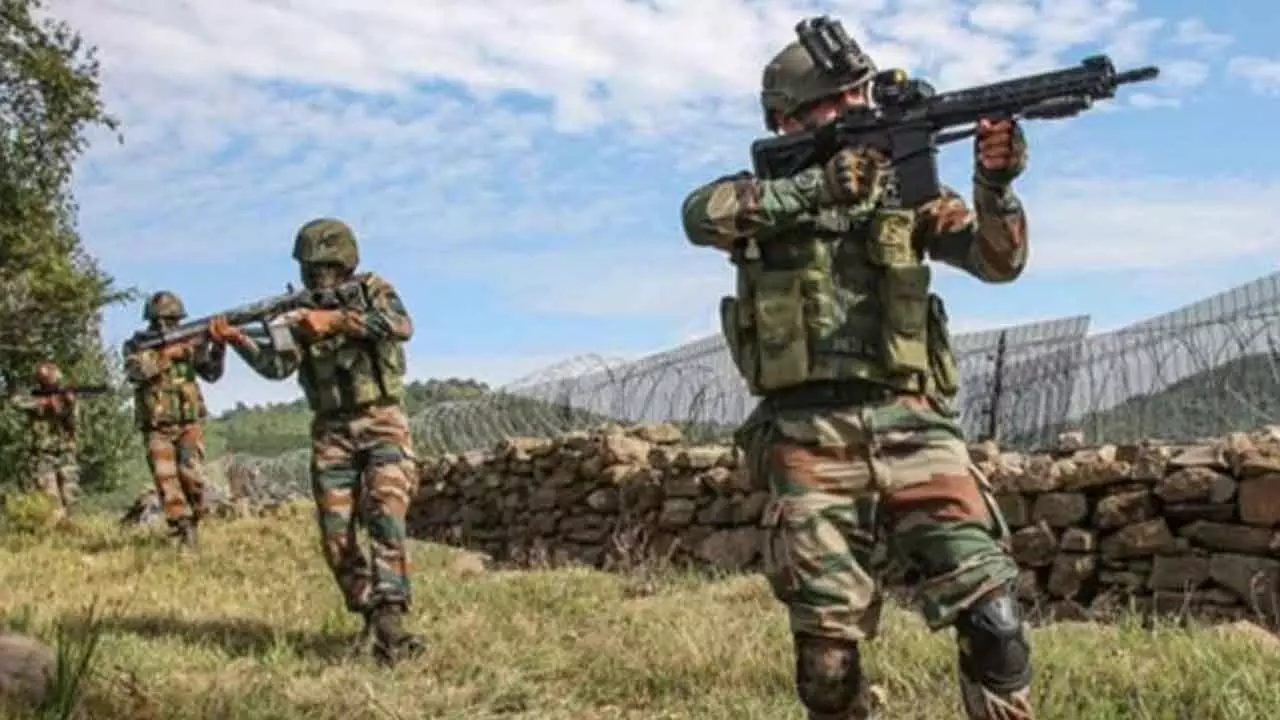India’s Integrated Military: A New Era Of Multi-Domain Warfare Readiness
Operation Sindoor serves as a powerful testament to this evolution, demonstrating India's capability for precise, intelligence-led, and multi-domain military responses
India’s Integrated Military: A New Era Of Multi-Domain Warfare Readiness

This strategic shift towards jointness and integrated operations not only enhances India's defense capabilities but also sends a strong message of national resolve in the face of evolving security threats, firmly charting a path for a resilient and united future
In an age of multi-domain warfare, where threats evolve faster than borders shift, India's national security architecture has demonstrated the strength of jointness and strategic foresight. Operation SINDOOR, initiated on May 7, 2025, in the aftermath of the Pahalgam terror attack, which claimed the lives of 26 innocent civilians showcased a calibrated, tri-services response that embodied precision, professionalism, and purpose. Operation Sindoor was conceived as a punitive and targeted campaign to dismantle the terror infrastructure across the Line of Control and deeper inside Pakistan.
Multi-agency intelligence provided confirmation of nine major camps that were eventually targeted in the operation. India’s retaliatory action was based on meticulous planning and an intelligence-led approach, which ensured that the operations were conducted with minimal collateral damage. Operational ethics were central to the mission, and restraint was exercised to avoid civilian harm.
Operation Sindoor was not just a tactical success but a strategic statement. It demonstrated India’s capacity for high-precision, coordinated military action across land, air, and sea. The operation was made possible by years of investment in defence preparedness and the unwavering policy and budgetary support from the Government of India. The message was clear: when appeals to reason and diplomacy are met with continued aggression, a decisive response is both justified and necessary. In sum, Operation Sindoor will be remembered as a defining moment in India’s defence history—a symbol of military precision, inter-service cooperation, and national resolve. It successfully eliminated terror threats, reaffirmed India’s regional dominance, and sent a strong message that cross-border terrorism would be met with a calibrated yet firm response.
On 24 December 2019, the Union Cabinet approved the creation of the Chief of Defence Staff (CDS), a four-star General who heads the Department of Military Affairs (DMA) and acts as the principal military adviser to the Defence Minister on tri-Service matters.
The CDS strengthens unified leadership and fosters integration for a more coordinated and modern Indian military.
To modernize the Armed Forces, efforts are underway to restructure forces through the establishment of Integrated Theatre Commands (ITCs) and Integrated Battle Groups (IBGs). These reforms aim to optimize operational preparedness by unifying the Army, Navy, and Air Force capabilities based on geography and function.
The Department of Military Affairs (DMA) with CDS as Secretary was created in 2020 to facilitate optimal utilization of resources and promote jointness among the three Services.
The Inter-Services Organisations (Command, Control & Discipline) Act, 2023 promotes jointness in the Indian Armed Forces by empowering commanders of tri-service formations with authority over personnel from all three Services. This unifies the disciplinary chain, speeds up decision-making, and fosters operational and cultural integration. By streamlining command without affecting individual Service identities, the Act lays the legal foundation for future integrated theatre commands.
Three Joint Logistic Nodes (JLNs) have been established and are operational since 2021 at Mumbai, Guwahati and Port Blair for Logistics Integration between the three services.
Exercise Prachand Prahar 2025: The Indian Armed Forces conducted a tri-service integrated multi-domain exercise, Prachand Prahar, in the high-altitude terrain of the Himalayas along the Northern Borders in Arunachal Pradesh. The three-day exercise, held from March 25 to 27, 2025, focused on coordinated operations involving the Army, Air Force, and Navy. Prachand Prahar follows Exercise Poorvi Prahar, conducted in November 2024, which focused on the integrated application of aviation assets. The exercise validated integrated planning, command and control, and seamless execution of surveillance and firepower platforms across the three services, covering the full spectrum of conflict.
Integrated Air Command and Control System (IACCS): The Integrated Air Command and Control System (IACCS) of the Indian Air Force provides the backbone for real-time coordination, enabling synchronized responses across multiple units of the Army, Navy, and Air Force. This system proved its mettle recently during the tensions between India and Pakistan post Operation Sindoor. Defence Minister Rajnath Singh, with all the Secretaries of the Ministry of Defence unanimously decided to observe 2025 as the ‘Year of Reforms’ in the MoD. This would aim at transforming the Armed Forces into a technologically-advanced combat-ready force capable of multi-domain integrated operations.
India’s ability to project strength across land, sea, and air is no longer theoretical—it is structured, synchronized, and deeply integrated. The nation’s tri-services architecture now operates as a cohesive force. As modern threats blur traditional boundaries, this integrated posture ensures that whether confronting aggression on the high Himalayas, securing maritime frontiers, or neutralizing aerial intrusions, India stands ready, resilient, and united. The future of national security lies in jointness—and India is already charting that future with purpose and resolve.

